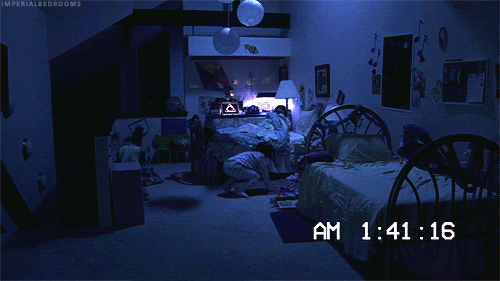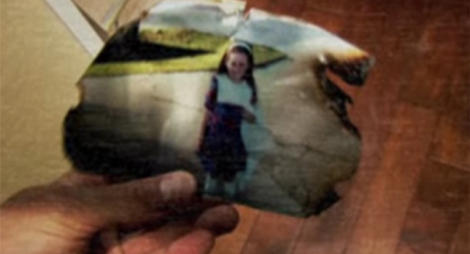 PARANORMAL
PARANORMAL
|
Paranormal” has been in the English language since at least 1920. It consists of two parts: [[wikt:para-|para]] and [[normality (behavior)|normal]]. In most definitions of the word paranormal, it is described as anything that is beyond or contrary to what is deemed scientifically possible. The Journal of Parapsychology indicates that the definition implies that the scientific explanation of the world around us is the 'normal' part of the word and 'para' makes up the above, beyond, beside, contrary, or against part of the meaning. ''Para'' has a Greek language|Greek and Latin language|Latin origin. Its most common meaning (the Greek usage) is 'similar to' or 'near to', as in paragraph. In Latin, ''para'' means 'above,' 'against,' 'counter,' 'outside,' or 'beyond'. For example, ''parapluie'' in French language|French means 'counter-rain' – an umbrella. It can be construed, then, that the term paranormal is derived from the Latin use of the prefix 'para', meaning 'against, counter, outside or beyond the norm.' A ghost is a manifestation of the spirit or Soul (spirit)|soul of a person.> Alternative theories expand on that idea and include belief in the ghosts of deceased animals. Sometimes the term "ghost" is used synonymously with any spirit or demon,<however in popular usage the term typically refers to a deceased person's spirit. The belief in ghosts as souls of the departed is closely tied to the concept of [[animism]], an ancient belief which attributed souls to everything in nature.<ref name="EncyOccult"/> As the 19th-century [[anthropologist]] [[James Frazer]] explained in his classic work, ''[[The Golden Bough]]'', souls were seen as the creature within that animated the body.<ref>{{gutenberg|no=3623|name=The Golden Bough}}</ref> Although the human soul was sometimes symbolically or literally depicted in ancient cultures as a bird or other animal, it was widely held that the soul was an exact reproduction of the body in every feature, even down to clothing the person wore. This is depicted in artwork from various ancient cultures, including such works as the [[Egyptian Book of the Dead]], which shows deceased people in the afterlife appearing much as they did before death, including the style of dress. A widespread belief concerning ghosts is that they are composed of a misty, airy, or subtle material. [[Anthropology|Anthropologists]] speculate that this may also stem from early beliefs that ghosts were the person within the person, most noticeable in ancient cultures as a person's breath, which upon exhaling in colder climates appears visibly as a white mist.<ref name="EncyOccult"/> This belief may have also fostered the metaphorical meaning of "breath" in certain languages, such as the [[Latin]] ''[[wikt:Special:Search/spiritus|spiritus]]'' and the [[Greek language|Greek]] ''[[pneuma]]'', which by analogy became extended to mean the soul. In the [[Bible]], [[God]] is depicted as animating [[Adam (Bible)|Adam]] with a breath. Numerous theories have been proposed by scientists to provide normal explanations for [[List of reportedly haunted locations|ghost sightings]].<ref name="EncyOccult"/> Although the evidence for ghosts is largely [[anecdotal]], the belief in ghosts throughout history has remained widespread and persistent. The possibility of [[extraterrestrial life]] is not, by itself, a paranormal subject. Many scientists are actively engaged in the search for unicellular life within the [[solar system]], carrying out studies on the surface of [[Mars]] and examining [[meteors]] that have fallen to [[Earth]].<NASA Scientists To Discuss Search For Extraterrestrial Life], Space Daily, Dec 11, 2003</ref> Projects such as [[SETI]] are conducting an astronomical search for [[radio]] activity that would show evidence of intelligent life outside the solar system.> [[Evolution|Scientific theories]] of how life developed on Earth allow for the possibility that life developed on other [[planets]] as well. The paranormal aspect of [[extraterrestrial life]] centers largely around the belief in [[unidentified flying objects]] and the phenomena said to be associated with them. Early in the history of UFO culture, believers divided themselves into two camps. The first held a rather conservative view of the phenomena, interpreting them as unexplained occurrences that merited serious study. They began calling themselves "[[Ufology|ufologists]]" in the 1950s and felt that logical analysis of sighting reports would validate the notion of extraterrestrial visitation.<ref name="EncyOccult"/> The second camp consisted of individuals who coupled ideas of extraterrestrial visitation with beliefs from existing quasi-religious movements. These individuals typically were enthusiasts of [[occultism]] and the paranormal. Many had backgrounds as active [[Theosophists]], [[Spiritualists]], or were followers of other [[esoteric]] doctrines. In contemporary times, many of these beliefs have coalesced into [[New Age]] spiritual movements.<ref name="EncyOccult"/> Both secular and spiritual believers describe UFOs as having abilities beyond what are considered possible according to known [[aerodynamic]] constraints and [[physical laws]]. The transitory events surrounding many UFO sightings also limits the opportunity for repeat testing required by the [[scientific method]]. Acceptance of UFO theories by the larger [[scientific community]] is further hindered by the many possible [[hoaxes]] associated with UFO culture. Those that study the existence of cryptids are called [[cryptozoologists]]. Cryptids have been sighted and documented for centuries. There are hundreds of creatures thought to be in existence today. Some of the more popular cryptids include [[Bigfoot]], the [[Loch Ness Monster]], living [[Dinosaurs]], [[Mothman]], rods or skyfish, the [[Jersey Devil]], [[Unicorn]] and [[werewolf|werewolves]]. Approaching the paranormal from a research perspective is often difficult because of the lack of acceptable physical evidence from most of the purported phenomena. By definition, the paranormal does not conform to conventional expectations of [[nature]]. Therefore, a phenomenon cannot be confirmed as paranormal using the scientific method because, if it could be, it would no longer fit the definition. (However, confirmation would result in the phenomenon being reclassified as part of science.) Despite this problem, studies on the paranormal are periodically conducted by researchers from various disciplines. Some researchers simply study the [[beliefs]] in the paranormal regardless of whether the phenomena are considered to objectively exist. This section deals with various approaches to the paranormal: [[anecdotal]], [[experiment]]al, and participant-observer approaches and the [[scientific skepticism|skeptical investigation]] approach. [[Charles Fort]] (1874–1932) is perhaps the best known collector of paranormal anecdotes. Fort is said to have compiled as many as 40,000 notes on unexplained [[forteana|paranormal experiences]], though there were no doubt many more than these. These notes came from what he called "the orthodox conventionality of Science", which were odd events originally reported in magazines and newspapers such as [[The Times]] and [[scientific journal]]s such as ''[[Scientific American]]'', ''[[Nature (journal)|Nature]]'' and ''[[Science (journal)|Science]]".'' From this research Fort wrote seven books, though only four survive. These are: ''[[The Book of the Damned]]'' (1919), ''[[New Lands]]'' (1923), ''[[Lo!]]'' (1931) and ''[[Wild Talents]]'' (1932); Reported events that he collected include [[Teleportation#Etymology|teleportation]] (a term Fort is generally credited with coining); [[poltergeist]] events, falls of frogs, fishes, inorganic materials of an amazing range; [[crop circles]]; unaccountable noises and explosions; [[spontaneous combustion|spontaneous fires]]; [[Levitation (paranormal)|levitation]]; [[ball lightning]] (a term explicitly used by Fort); [[unidentified flying object]]s; mysterious appearances and disappearances; giant wheels of light in the oceans; and animals found outside their normal ranges (see [[phantom cat]]). He offered many reports of [[Out-of-place artifact|OOPArt]]s, abbreviation for "out of place" artifacts: strange items found in unlikely locations. He also is perhaps the first person to explain strange human appearances and disappearances by the hypothesis of [[alien abduction]], and was an early proponent of the [[extraterrestrial hypothesis]]. Fort is considered by many as the father of modern paranormalism, which is the study of the paranormal.
|
![]() Copyright(C) 2007
- 2020. All rights reserved.
Copyright(C) 2007
- 2020. All rights reserved.
